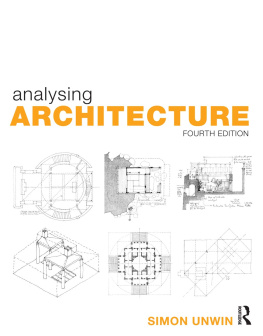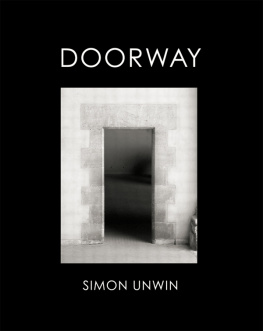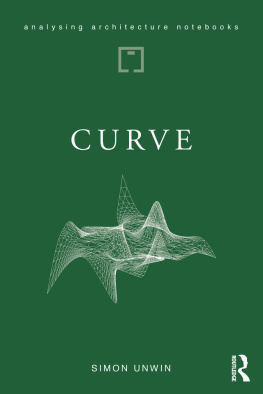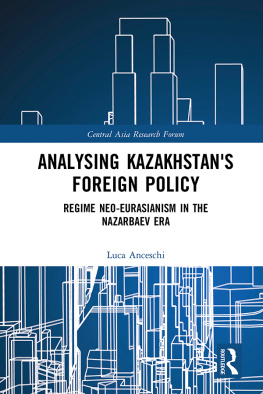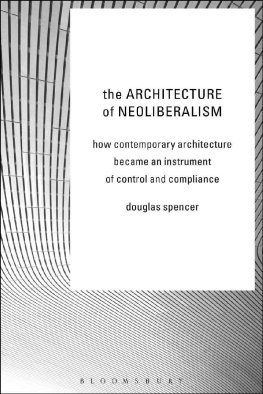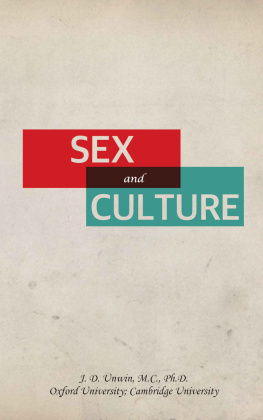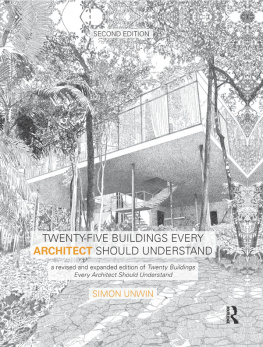Simon Unwin - Analysing Architecture
Here you can read online Simon Unwin - Analysing Architecture full text of the book (entire story) in english for free. Download pdf and epub, get meaning, cover and reviews about this ebook. City: London, New York, year: 2014, publisher: Routledge, genre: Home and family. Description of the work, (preface) as well as reviews are available. Best literature library LitArk.com created for fans of good reading and offers a wide selection of genres:
Romance novel
Science fiction
Adventure
Detective
Science
History
Home and family
Prose
Art
Politics
Computer
Non-fiction
Religion
Business
Children
Humor
Choose a favorite category and find really read worthwhile books. Enjoy immersion in the world of imagination, feel the emotions of the characters or learn something new for yourself, make an fascinating discovery.
- Book:Analysing Architecture
- Author:
- Publisher:Routledge
- Genre:
- Year:2014
- City:London, New York
- Rating:4 / 5
- Favourites:Add to favourites
- Your mark:
- 80
- 1
- 2
- 3
- 4
- 5
Analysing Architecture: summary, description and annotation
We offer to read an annotation, description, summary or preface (depends on what the author of the book "Analysing Architecture" wrote himself). If you haven't found the necessary information about the book — write in the comments, we will try to find it.
Analysing Architecture — read online for free the complete book (whole text) full work
Below is the text of the book, divided by pages. System saving the place of the last page read, allows you to conveniently read the book "Analysing Architecture" online for free, without having to search again every time where you left off. Put a bookmark, and you can go to the page where you finished reading at any time.
Font size:
Interval:
Bookmark:

Analysing ARCHITECTURE
FOURTH EDITION, REVISED AND ENLARGED
The most lucid and readable introduction to architecture I have read.
Professor Roger Stonehouse, Manchester School of Architecture
What is striking about the book is the thoughtfulness and consideration which is present in each phrase, each sentence, each plan, each section and each view, all contributing to an overarching quality which makes the book particularly applicable and appropriate to students in their efforts to make sense of the complex and diverse aspects of architecture Unwin writes with an architects sensibility and draws with an accomplished architects hand.
Susan Rice, Rice and Ewald Architects, Architectural Science Review
Now in its fourth edition, Analysing Architecture has become internationally established as the best introduction to architecture. Aimed primarily at those wishing to become professional architects, it also offers those in disciplines related to architecture (from archaeology to stage design, garden design to installation art) a clear and accessible insight into the workings of this rich and fascinating subject. With copious illustrations from his own notebooks, the author dissects examples from around the world and all periods of history to explain underlying strategies in architectural design and show how drawing may be used as a medium for analysis.
This new edition of Analysing Architecture is revised and expanded. Notably, the chapter on Basic Elements of Architecture has been enlarged to discuss the powers various architectural elements offer the architect. Three new chapters have been added to the section on Themes in Spatial Organisation, covering Occupying the In-between, Inhabited Wall and Refuge and Prospect. Two new examples a Mud House in Kerala, India, and the Mongyo-tei (a tea house) in Kyoto, Japan have been added to the case studies at the end of the book. The select bibliography has been expanded and the index overhauled.
Works of architecture are instruments for managing, orchestrating, modifying our relationship with the world around us. They frame just about everything we do. Architecture is complex, subtle, frustrating but ultimately extremely rewarding. It can be a difficult discipline to get to grips with; nothing in school quite prepares anyone for the particular demands of an architecture course. But this book will help.
Analysing Architecture is the foundation volume of a series of books by Simon Unwin exploring the workings of architecture. Other books in the series include Twenty Buildings Every Architect Should Understand and Exercises in Architecture.
Simon Unwin is Emeritus Professor of Architecture at the University of Dundee, Scotland. He has lived in Great Britain and Australia, and taught or lectured on his work in China, Israel, India, Sweden, Turkey and the United States. Analysing Architectures international relevance is indicated by its translation into Chinese, Japanese, Korean, Persian, Portuguese, Russian and Spanish and its adoption for architecture courses around the world. Simon Unwin continues to teach at The Welsh School of Architecture in Cardiff, UK.
Some more reviews of Analysing ARCHITECTURE (previous editions):
Simply the best! I have just gone through the first three chapters of this book and find myself compelled to write this review. I can simply say it is the best and a MUST to everyone in the field of architecture. Students, teachers, and practitioners alike will all find inspirations from this book.
Depsis, Amazon.com website
Unwin chooses to look at the underlying elements of architecture rather than, as is more usual, at the famous names, styles, movements and chronology of the genre. This rejection of the conventional art-historical approach can lead to interesting conclusions it is all presented cogently and convincingly through the medium of Unwins own drawings.
Hugh Pearman, The Sunday Times
In clear, precise diagrams and thoughtful text, author Simon Unwin offers an engaging methodology for the study of architecture and aesthetic systems. Time-tested buildings from classical temples to traditional Japanese homes and early modernist masterpieces, are explored in this wide ranging, but focused study. Unwin demonstrates that while architectural styles change over time, the underlying principles that organize quality designs remain remarkably consistent. This book is a must for all architectural students interested in acquiring the visual skills needed to understand a wide variety of design methodologies.
Diane78 (New York), Amazon.com website
The text has been carefully written to avoid the use of jargon and it introduces architectural ideas in a straightforward fashion. This, I suspect, will give it a well-deserved market beyond that of architects and architectural students.
Barry Russell, Environments BY DESIGN
From the camp sites of primitive man to the sophisticated structures of the late twentieth century, architecture as an essential function of human activity is explained clearly, and illustrated with the authors own excellent drawings. Highly recommended as a well-organized and readable introduction.
medals@win-95.com, Amazon.com website
This book establishes a systematic method in analyzing architecture. It explains how architectural elements are combined together to form designs that could relate an appropriate sense of place specific to the programme as well as the environment surrounding it. The book is well illustrated with diagrams and examples. An extremely useful introductory guide for those who want to learn more about the basics of architecture.
nikana99@hotmail.com, Amazon.com website
This book needs to be praised and appreciated and provides an excellent overview of the subject. There are beautiful and clear line drawings throughout and very substantial text thats TRYING TO TEACH YOU SOMETHING. A very sensitive and thorough treatment of a difficult and challenging subject, I highly recommend this and its companion piece An Architectural Notebook. Both are tremendous studio books, and will always have valuable insights to offer when you take them off the shelf.
Curt Dilger, Amazon.com website
This is an excellent book, recommended to anyone seriously interested in architecture. Its starting point is Unwins ability to draw well to think through his hands, as it were. This is fundamental to architectural skill and Unwin has used it to talk back to himself and describe the architecture around him. He uses this skill to romp through a huge number and variety of buildings and architectural situations in order to describe architectural strategies. Unwin has at the heart of his book a definition and understanding of architecture that we thoroughly endorse: to be dealt with in terms of its conceptual organisation and intellectual structure. But he adds to this potentially dry definition an emotive overlay or parallel: architecture as the identification of place (Place is to architecture as meaning is to language). Thus he takes on the issue of why we value architecture.
architecturelink.org.uk/GMoreSerious2.html
Analysing Architecture should become an essential part of all architectural education and an informative guide to the powerful analytical tool of architectural drawing.
Howard Ray Lawrence, Pennsylvania State University
Excellent in every way a core book, along with An Architecture Notebook
Next pageFont size:
Interval:
Bookmark:
Similar books «Analysing Architecture»
Look at similar books to Analysing Architecture. We have selected literature similar in name and meaning in the hope of providing readers with more options to find new, interesting, not yet read works.
Discussion, reviews of the book Analysing Architecture and just readers' own opinions. Leave your comments, write what you think about the work, its meaning or the main characters. Specify what exactly you liked and what you didn't like, and why you think so.

